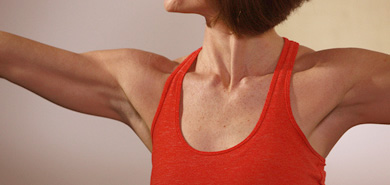Breast Cancer Reconstruction at OHSU Cosmetic and Plastic Services

At OHSU, breast reconstruction is an integral part of the process of breast cancer treatment. Our plastic surgery team works closely with our breast cancer surgical oncologists to determine the best plan for you. Your surgeons work together so that your reconstruction is done safely and coordinated with your cancer treatment. Your care is streamlined, comprehensive and provided all at the same facility.
When and at what stage is breast reconstruction performed?
You will meet the plastic surgery team immediately after diagnosis, so you can understand your options, can feel encouraged and look forward to the outcome. By getting involved at the start of treatment, our plastic surgery team can do more to make sure your breast looks natural and attractive after surgery. We offer a full range of reconstructive options, including all types of microsurgical procedures. You and your breast cancer care team will discuss which options are best for you.
What are the different options for breast reconstruction?
Your options fall into three main categories:
- A prothesis or implant
- Your own tissues
- A combination of your tissues plus an implant
How is breast reconstruction performed?
A prothesis or implant
Tissue expander and implant reconstruction techniques use a saline or silicone breast implants to reconstruct the breast. Reconstruction may be done in one or two stages. In the two-stage procedure, tissue expanders are placed under the chest muscle to stretch the tissue and prepare the body for a permanent implant in the first operation. During the second stage the tissue expander is removed and replaced with a permanent silicone or saline implant. Some patients will benefit from a one-stage, direct-to-implant approach.
Your own tissues
Autologous Tissue Reconstruction (e.g., DIEP, TRAM or LAT Flap): These procedures use your own tissue to replace the breast the breast tissue lost after mastectomy. Small excess lower abdominal rolls are ideal for creating a natural looking and feeling breast. A TRAM or LAT flap uses tissue, muscle, and blood vessels from the two areas of the body (abdomen or back) to reconstruct the breast. DIEP reconstruction is a variation of TRAM flap that uses only tissue and blood vessels from the abdomen to reconstruct the breast, thus preserving the abdominal muscles.
A combination of tissues plus an implant
Occassionally patients may not be a good candidates for the above procedures alone. If this is the case, tissue can be moved from your back to cover an implant. A latissimus dorsi (LD) is the most common method. The advantage is having more tissue to cover an implant, which allows the reconstruction to look and feel more natural.
Procedures for symmetry
Surgery can be done on the opposite breast to help create symmetry between the native and reconstructed breast. Procedures include reductions, breast lifts and breast augmentation.
Oncoplastic breast reduction
Done in conjunction with your surgical oncologist a lumpectomy is performed to remove the cancer, while your plastic surgeon performs a breast reduction or breast lift on one or both sides for symmetry.
What are the results of breast reconstruction?
The final results of breast reconstruction following mastectomy can help to lessen the physical and emotion impact of mastectomy. Over time, some breast sensation may return and scar lines will be less visible. Most women feel that the overall improvement in their quality of life and confidence in their body is worth these small changes. It is important to continue careful monitoring of breast health through self-exam, mammography and other diagnostic techniques.
Nipple or areola reconstruction
Nipple or areola reconstruction is a surgical procedure to form the nipple mound of a reconstructed breast. The procedure involves either folding a small portion of skin in on itself, and may include a skin graft and later nipple tattoo.
Nipple tattooing
Nipple tattooing is an outpatient surgical procedure to introduce pigmentation to the areola following nipple reconstruction. As the final stage of breast reconstruction, nipple tattooing often requires two sessions, approximately two months apart.